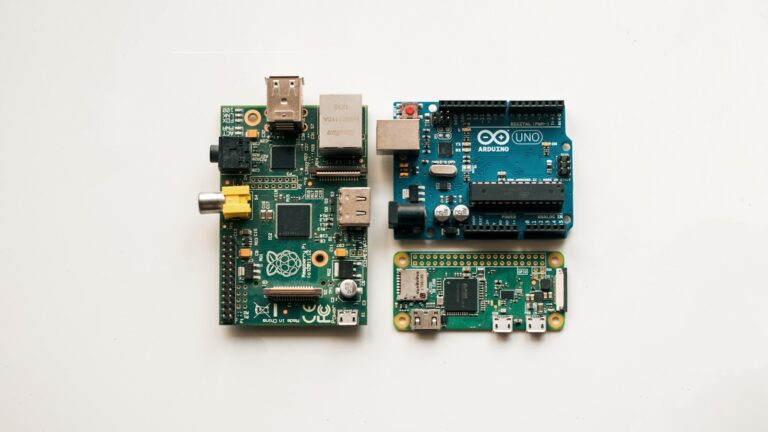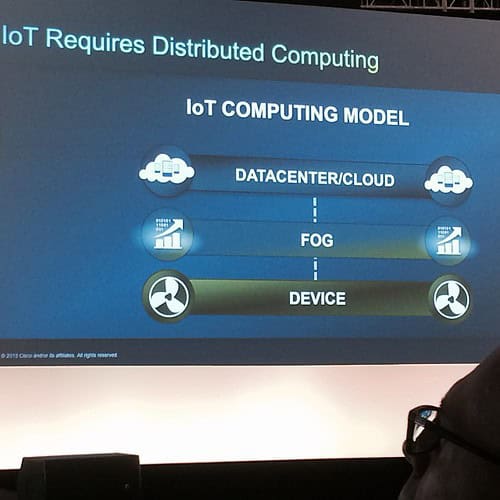
Sending telemetry to the cloud involves transmitting essential data from various devices to a central storage or analytics system. This process helps monitor systems, understand their performance, and ensure everything runs smoothly. Businesses can utilize telemetry to gain valuable insights and make data-driven decisions.
One common method for transmitting data is using tools like Azure IoT. These tools help send data from devices to cloud-based storage services. For example, Azure IoT can subscribe to MQTT topics and store messages in Delta tables. This stored data can then be analyzed using services like Power BI, providing insights that drive better business outcomes.
Telemetry also supports cloud environments by measuring routing decisions, configuration changes, and security modifications. This data is secure and valuable for evaluating cloud usage and optimizing resource allocation. With proper tools and techniques, telemetry ensures a better-managed and more efficient cloud infrastructure.
Image Credit: ccPixs.com (www.ccPixs.com)
Sky’s the Limit: Sending Telemetry to the Cloud
Telemetry, the lifeblood of data-driven decision-making, thrives in the cloud’s embrace. But how do you ensure this crucial data reaches its destination reliably, securely, and efficiently? Let’s explore best practices and key considerations for sending telemetry to the cloud.
Why Send Telemetry to the Cloud?
- Scalability: Cloud infrastructure easily handles massive volumes of telemetry data, adapting to your needs as they grow.
- Accessibility: Access your telemetry data from anywhere, anytime, enabling remote monitoring and analysis.
- Centralized Management: Consolidate telemetry from diverse sources for streamlined insights and easier management.
- Advanced Analytics: Leverage powerful cloud-based tools for real-time analysis, trend detection, and actionable insights.
Choosing the Right Cloud Provider
| Provider | Key Strengths | Considerations |
|---|---|---|
| AWS (Amazon Web Services) | Extensive services, scalability, and integration options. | Can be complex for beginners, requires careful cost management. |
| Microsoft Azure | Strong enterprise focus, hybrid cloud capabilities. | Steeper learning curve, might be overkill for smaller projects. |
| Google Cloud Platform | Machine learning prowess, competitive pricing. | Smaller market share than AWS and Azure. |
| Other Providers | Specialized offerings, niche solutions. | May lack some features of larger platforms. |
Best Practices for Telemetry Transmission
- Data Formatting: Choose a standard format like JSON or Protocol Buffers for interoperability.
- Compression: Compress data before transmission to minimize bandwidth usage and reduce costs.
- Encryption: Protect sensitive data in transit and at rest using robust encryption methods.
- Batching: Send data in batches to reduce overhead and improve efficiency.
- Error Handling: Implement retry mechanisms and error logging to ensure reliable data delivery.
Key Considerations
- Cost: Factor in storage, bandwidth, and processing costs when choosing a cloud provider and designing your telemetry architecture.
- Security: Prioritize data security by using strong encryption, authentication, and access controls.
- Privacy: Respect user privacy by anonymizing or aggregating data where appropriate.
- Compliance: Adhere to relevant data protection regulations like GDPR or CCPA.
By following these best practices and considering the key factors, you can ensure that your telemetry data reaches the cloud securely, efficiently, and effectively.
Key Takeaways
- Telemetry transmits data to a central system for monitoring.
- Azure IoT helps send and store telemetry data for analysis.
- Telemetry in the cloud measures and optimizes performance.
Fundamentals of Telemetry in the Cloud
Telemetry in the cloud collects and transmits data to monitor and analyze systems. This process helps in optimizing performance, ensuring security, and making informed decisions.
Understanding Telemetry and Its Importance
Telemetry refers to the collection, transmission, and analysis of data from remote systems. It is essential in cloud computing to monitor applications, infrastructure, and IoT devices. This data helps identify performance bottlenecks, improve reliability, and enhance security measures. Accurate telemetry ensures smooth operation and timely response to issues.
Security and Privacy Considerations
Security is crucial in telemetry to protect sensitive data. Implementing robust authentication and encryption methods is essential. For instance, Transport Layer Security (TLS) should be used for data transmission. Compliance with regulations such as GDPR is also necessary to ensure data privacy and legal adherence. Regular audits ensure security measures are effective.
Selecting the Right Cloud Services
Choosing appropriate cloud services is vital for telemetry. Services like Azure IoT Hub and AWS IoT Core offer advanced features for data collection and analysis. These platforms provide scalable solutions to handle large volumes of telemetry data. Selecting a service depends on the specific needs of the organization, including data volume, real-time processing, and security requirements.
Integration with IoT Devices
Integrating telemetry with IoT devices allows for comprehensive monitoring. Devices like sensors and controllers can send data to cloud services for analysis. Proper device registration and reliable communication protocols are essential. This integration helps in remote monitoring and management of devices, improving operational efficiency and reducing downtime.
Communication Protocols and Data Transmission
Effective communication protocols are crucial for transmitting telemetry data. Common protocols include MQTT and HTTPS. MQTT is lightweight, making it suitable for IoT devices. HTTPS ensures secure data transfer. The choice of protocol depends on the device capabilities, data volume, and security requirements. Reliable transmission ensures that data is accurate and timely.
Device and Cloud Telemetry Workflows
Telemetry workflows involve collecting, transmitting, and analyzing data. Devices generate data, which is then sent to the cloud through secure protocols. Cloud services process and store this data for further analysis. These workflows help in monitoring system performance, identifying issues, and making data-driven decisions to improve efficiency.
Stream Processing and Data Management
Stream processing allows real-time analysis of telemetry data. Services like AWS Kinesis and Azure Stream Analytics handle large volumes of data streams. Effective data management ensures that relevant data is stored and processed efficiently. This helps in timely decision-making and enhances system performance by identifying and responding to issues promptly.
Telemetry Data Analysis and Usage
Analyzing telemetry data helps in understanding system performance. Metrics such as latency, error rates, and resource utilization provide insights into system health. This data is used to optimize performance, identify issues, and make informed decisions. Regular analysis ensures that systems operate efficiently and meet performance expectations.
Developer Tools and Environment Setup
Developers need the right tools and environment for telemetry. Tools like Visual Studio and Azure CLI facilitate development and deployment. Setting up the environment includes installing necessary SDKs and libraries. Proper setup ensures that telemetry systems are robust and can handle the requirements of monitoring and data analysis effectively.
Maintenance and Evolution of Telemetry Systems
Maintaining telemetry systems involves regular updates and monitoring. It is important to upgrade tools and services to handle evolving requirements. Continuous monitoring helps in identifying issues early. Evolving systems ensures that they remain efficient, secure, and capable of handling new challenges as technology and requirements change.
Compliance and Regulatory Frameworks
Compliance with regulatory frameworks is essential in telemetry. Regulations such as GDPR and HIPAA govern data privacy and security. Adhering to these regulations ensures legal compliance and protects sensitive data. Regular audits and reviews ensure that telemetry practices are in line with current legal and regulatory standards.
Frequently Asked Questions
Sending telemetry data to the cloud requires secure transmission methods, structured data formats, and efficient device-to-cloud communication strategies. The following sections cover these aspects to ensure reliable and effective telemetry data management.
How can telemetry data be securely transmitted to cloud services?
Encrypt data using TLS to protect it during transmission. Use authentication mechanisms such as API keys or OAuth tokens. Ensure the cloud service supports secure transmission protocols.
What methods are available for sending telemetry data from IoT devices to AWS?
IoT devices can use MQTT for lightweight communication. HTTP/HTTPS is another option for more robust tasks. AWS IoT Core provides secure device connections and message routing services.
What steps are involved in sending telemetry from applications to Azure IoT Hub?
Register the device in Azure IoT Hub. Use SDKs provided by Azure for different programming languages. Implement telemetry data collection and send it to the IoT Hub endpoint.
How does device-to-cloud communication work in the context of IoT?
Devices collect data and send it to the cloud using communication protocols like MQTT or HTTP. The cloud processes and stores this data. Devices often use secured channels to ensure data integrity.
What are the best practices for structuring telemetry data before sending it to the cloud?
Use standardized data formats such as JSON or XML. Include timestamps and device identifiers. Ensure data is categorized and tagged for easier processing and analytics.
How can cloud-to-device messages be efficiently managed within an IoT Hub?
Set up message routing rules in the IoT Hub. Use direct methods like C2D messaging and Device Twins for device updates. Monitor and debug communication to maintain efficient operations.




